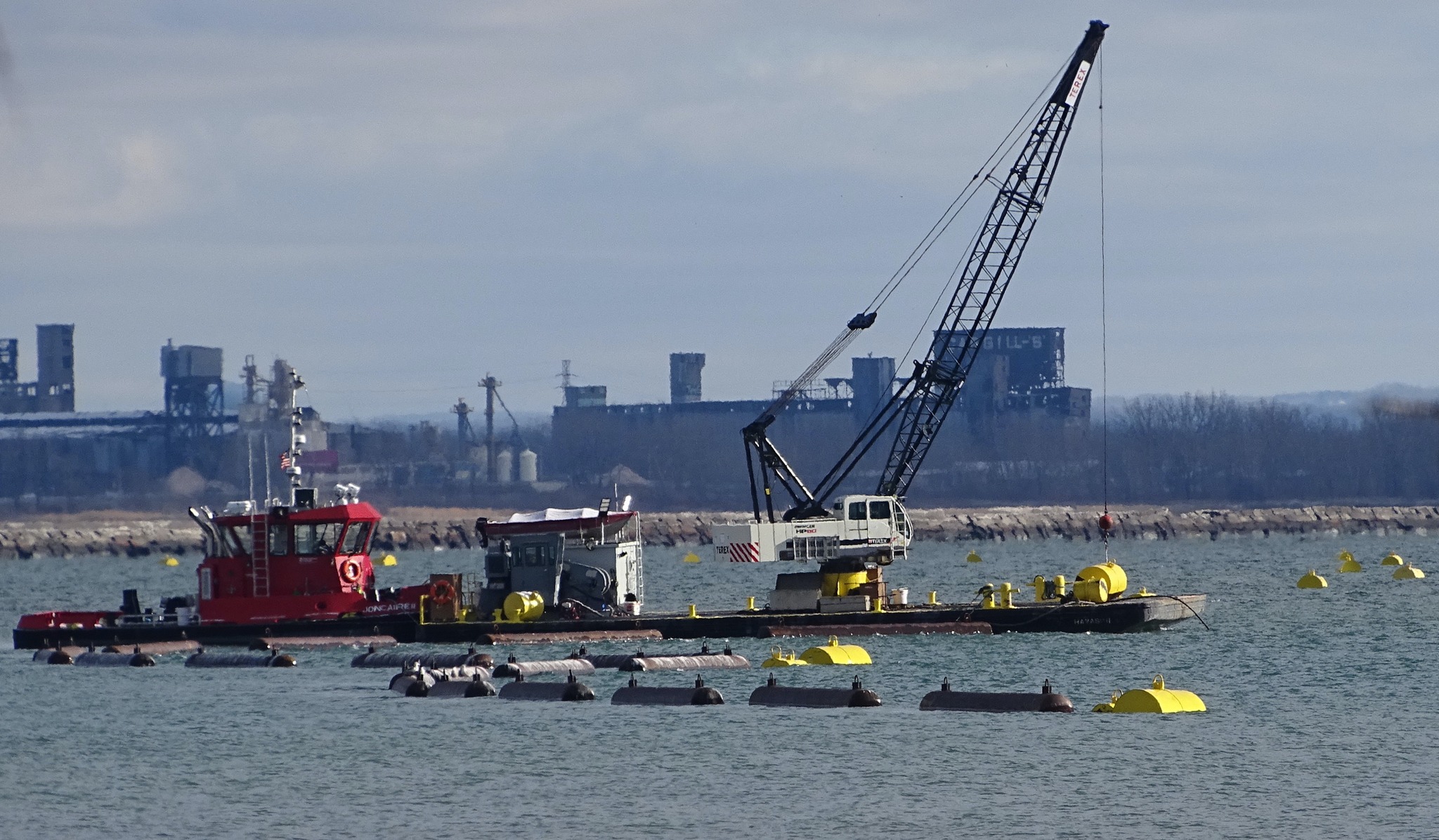Christine Whelan FEO, March 14, 2024, VOL. 5 ISSUE 14
The Niagara River ice boom was ready to set a record on February 27 as crews from the New York Power Authority prepared to begin the annual removal of the 22 spans that make up the boom. However, by the following day, the Great Lakes Commission stated that the ice boom was delayed due to weather conditions.
It would have been the earliest date for the removal of the ice boom. The previous — and still standing — record date was February 28, 2012. The latest date for the start of the boom opening was May 3, 1971.
Lake Erie’s ice cover remained minimal during the 2023-2024 winter season. At the end of January, there were trace amounts of ice on Lake Erie and as of February 26, the water temperature near the ice boom was 1.7°C (35°F). Due to the lack of ice cover on Lake Erie and the absence of ice in the Maid-of-the-Mist Pool below Niagara Falls, preparations were underway for the removal, the International Joint Commission had posted on their website just the day before.
What is the Niagara River ice boom?
Since 1964, an ice boom has been stretched across the mouth of the Niagara River at the eastern end of Lake Erie each winter. It extends about 2680 metres (8,800 feet) from the outer breakwall at Buffalo Harbor almost to the Canadian shore.
A reduction of ice entering the river reduces the potential for ice jams, which can result in damage to shoreline property and significantly reduce water flow for hydroelectric power production. It has also kept the ice build-up in Lake Erie from flowing into the lower gorge of the Niagara River causing an ice bridge.
The boom is owned and operated by the New York Power Authority and Ontario Power Generation. The use of the boom is authorized by the International Joint Commission with its International Niagara Board of Control overseeing the installation, operation, and removal.
In 1997, a more modern ice boom was utilized for the first time. This boom is made of 22 span cables, each boom span consisting of a series of 11 hollow steel surface floating pontoons and requires less maintenance, is more buoyant, and is more efficient at holding the ice back.
According to NiagaraFallsInfo.com, “The ice boom is flexible. It is designed to assist in the formation of a stable ice arch at the mouth of the Niagara River. It will not stop all of the ice from flowing from Lake Erie into the Niagara River. During periods of storms or high winds, the ice arch breaks and the pressure on the ice boom becomes excessive. Then the boom pontoons will submerge to allow the ice to flow over it. When the pressure returns to normal, the boom pontoons return to the floating position again cutting off the ice flow.”
Boom In — Boom Out
According to the International Niagara Board of Control of the International Joint Commission’s current Order of Approval, installation may begin on December 16th or when the Lake Erie water temperature, as measured at the Buffalo water intake, reaches 4ºC (39ºF), whichever occurs first.
The Order requires that the boom be opened by April 1st of each year unless there is more than 650 square kilometres (250 square miles) of ice remaining in the eastern end of Lake Erie. Extenuating circumstances may require a delay in the ice boom opening beyond April 1st.
Boom removal is dependent on weather and ice conditions in Lake Erie and the Niagara River,
As of March 6, the boom could still be seen at the mouth of the river and there is no word on the official sites to indicate when alternative plans have been set to continue the removal of the ice boom.
Photo by Laurie Allan

